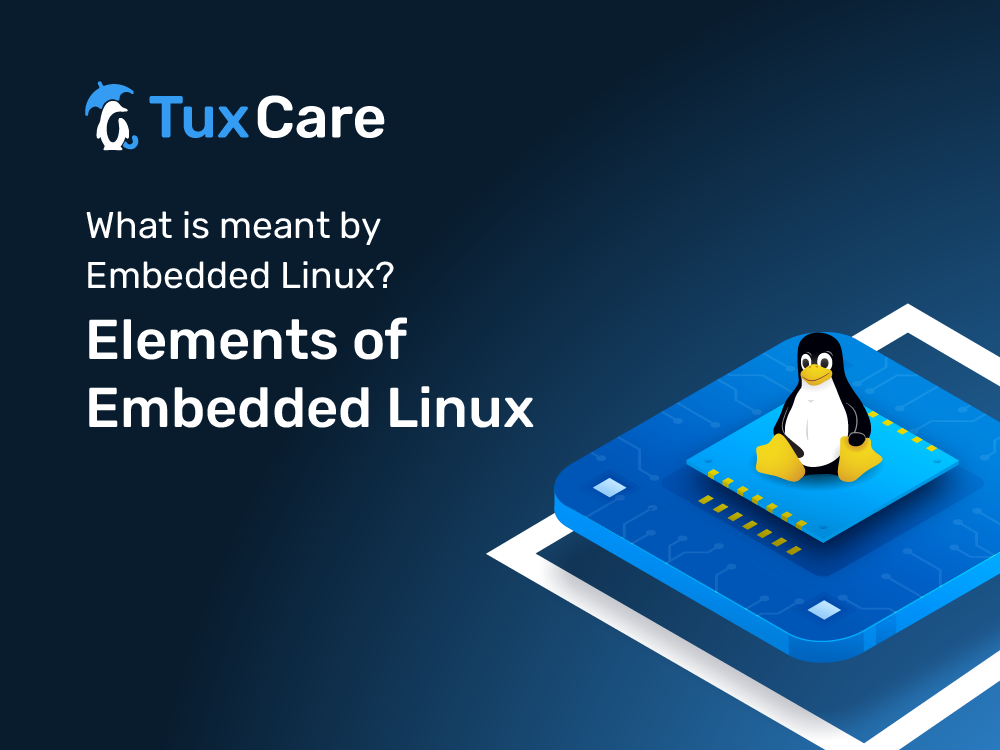What is Meant By Embedded Linux? Elements of Embedded Linux
Embedded Linux refers to a scenario where an embedded system employs an operating system that utilizes the Linux kernel. This Linux distribution will be specifically designed for an embedded system; it will have a smaller size than normal, possessing fewer features and less processing power. Such an instance of Linux can only run device-specific, purpose-built applications.
But, what is an embedded system? Well, an embedded system is a small computer that lives within a larger structure that isn’t itself a computer. It is a bundle of computing hardware and software, designed for a specific function, that lives within a larger physical system.
Rooted in a microprocessor or microcontroller, embedded systems are controlled by a real-time operating system, run on a limited amount of power and memory, and range widely in size and UI complexity. Embedded systems are all around us, existing within a vast array of consumer, industrial, medical, and military technologies.
This article aims to provide insight into what embedded Linux is and explore various components of embedded Linux.
Embedded Linux Development
Embedded Linux systems typically consist of several key elements that contribute to their functionality and operation. They are as follows:
Hardware: Hardware platforms are where embedded Linux functions. These hardware platforms deliver essential capabilities like processing power, memory, storage, and interfaces, enabling seamless integration with peripherals and external devices.
Linux Kernel: The Linux kernel is the core component of the embedded Linux system. It provides essential operating system services, including process management, memory management, device drivers, networking, and file systems. The kernel interacts directly with the hardware and manages the system’s resources.
Bootloader: The bootloader assumes the crucial role of initializing the hardware and loading the Linux kernel into memory. It offers a mechanism to configure the boot process and manage diverse boot options. Typically residing in non-volatile memory, such as flash memory, the bootloader takes precedence as the initial software is executed when the system powers on.
Root Filesystem: The root filesystem contains the entire directory structure and essential files of the Linux operating system. It includes libraries, configuration files, device nodes, executables, and other components required for the system to function.
Device Drivers: Device drivers enable the Linux kernel to communicate with and control the hardware peripherals connected to the embedded system. Such drivers help the kernel access devices such as display controllers, network interfaces, storage devices, sensors, and input/output devices. Moreover, device drivers allow applications to interact with the hardware through standardized interfaces provided by the kernel.
Libraries and Utilities: Embedded Linux systems include libraries and utilities that provide additional functionality to the system. Libraries offer APIs for various tasks, including graphical user interfaces (GUIs), networking protocols, file systems, cryptography, and multimedia processing. All command-line tools for system administration, debugging, software development, and other common tasks are part of utilities.
Applications: Embedded Linux systems support the execution of user-level applications. These applications can be custom-developed for the specific embedded system or can be existing Linux applications ported to the target platform. Depending on the system’s requirements and capabilities, applications can range from small command-line utilities to complex graphical applications.
Configuration and Build Systems: Embedded Linux development often involves configuration and build systems that facilitate customizing the Linux system for a particular embedded platform. Tools such as Buildroot, Yocto Project, and OpenEmbedded help manage the configuration, compilation, and deployment process. They allow developers to tailor the Linux system, including the kernel configuration, selection of components, and generation of the root filesystem, to suit their specific requirements.
Why Use Embedded Linux?
Linux offers versatility, affordability, and everything good that comes with open-source software, making it highly suitable for embedded systems. It has been successfully adapted to cater to custom-purpose microprocessors, expanding its applicability.
In contrast to proprietary embedded operating systems, Linux presents numerous advantages. It fosters a diverse ecosystem of software providers, developers, and support networks, promoting competition and flexibility. With its stable kernel, Linux ensures reliable and consistent performance.
Linux has many supported chip architectures, enabling it to run on devices as small as sockets and as large as mainframes. Linux enables a highly modular building-block approach to constructing a custom embeddable system, which provides added flexibility.
The following features make Linux great for embedded systems:
Flexibility: Embedded Linux empowers small devices with the capabilities of a fully-fledged operating system, bestowing upon them remarkable intelligence and versatility. Developers and system administrators can finely tune and customize the behavior of these devices to meet specific requirements. This inherent flexibility ensures that the device can efficiently perform a multitude of tasks.
Stability: Linux has earned its reputation for stability and reliability, and embedded Linux inherits these exceptional qualities. It possesses the ability to run continuously for extended periods, spanning months or even years, without experiencing crashes or failures. This remarkable stability makes Embedded Linux a great choice for critical systems that demand uninterrupted operation.
Open Source: Embedded Linux thrives within a vast and enthusiastic open-source community. This vibrant ecosystem enables developers and system administrators to leverage an abundance of resources, libraries, and tools, substantially saving time and effort throughout the development process.
Hardware Support: Linux surpasses other operating systems in this regard as it has extensive compatibility with a wide range of hardware platforms. It boasts comprehensive support for various devices, including controllers, network interfaces, graphics cards, and much, much more. Although there may be a handful of manufacturers who do not offer Linux drivers, the Linux community benefits from dedicated developers who actively engage in reverse engineering drivers from alternative operating systems to bridge any gaps.
These factors have made Linux very popular within embedded systems, such as smartphones and tablets, as well as smart TVs and routers.
The Best Embedded Linux Distro
Embedded systems have ushered in a technological revolution, transforming our interactions with a diverse range of devices, spanning from smart appliances to industrial machinery. Central to many of these embedded systems is Embedded Linux, an incredibly robust and flexible operating system that facilitates the seamless fusion of hardware and software.
Some of the best Linux distributions for embedded development are Yocto Project, Buildroot, and OpenWRT/LEDE.
The best example of an embedded Linux is Android, developed by Google. Based on a modified Linux kernel, Android is distributed under an open-source license. Amongst the better-known other small-footprint embedded Linux versions are:
ETLinux: A complete Linux distribution designed to run on small industrial computers.
LEM: A small (<8 MB) multi-user, networked Linux version that runs on 386s.
LOAF: “Linux On A Floppy” distribution that runs on 386s.
uClinux: Linux for systems without MMUs.
uLinux: A tiny Linux distribution that runs on 386s.
ThinLinux: A minimized Linux distribution for dedicated camera servers, X-10 controllers, MP3 players, and other embedded applications.
Linux for Embedded Applications
From its open-source nature to scalability, developer support, and tooling, Linux stands out as an advantageous platform that makes it a top preference for developers to build embedded applications.
Developers have successfully adapted the Linux kernel to numerous architectures. This flexibility allows Linux to break free from the constraints of specialized programming languages often found in industrial settings. Moreover, compared to programming native microcontrollers, Linux provides extensive language support, enabling developers to work with a diverse range of programming languages.
Linux boasts a comprehensive suite of networking protocols and exhibits remarkable scalability. Additionally, deploying Linux in embedded systems doesn’t require any royalties, making it a cost-effective solution.
The aforementioned advantages are merely a glimpse into the extensive list of reasons contributing to the rapid growth and popularity of embedded Linux. Developers favor it for its versatility, reliability, and the immense potential it offers for creating innovative and efficient embedded applications.
Conclusion
Embedded Linux distinguishes itself as an exceptional operating system, boasting an extensive array of features and functionalities that facilitate the harmonious integration of hardware and software components. It empowers developers to leverage its capabilities to their advantage, creating embedded systems that deliver optimal performance and efficiency.
Moreover, Embedded Linux serves as a solid foundation for building sophisticated and innovative solutions across various domains. This allows system administrators to harness the full potential of embedded systems, ensuring optimal performance and functionality.



 Documentation
Documentation Login
Login



